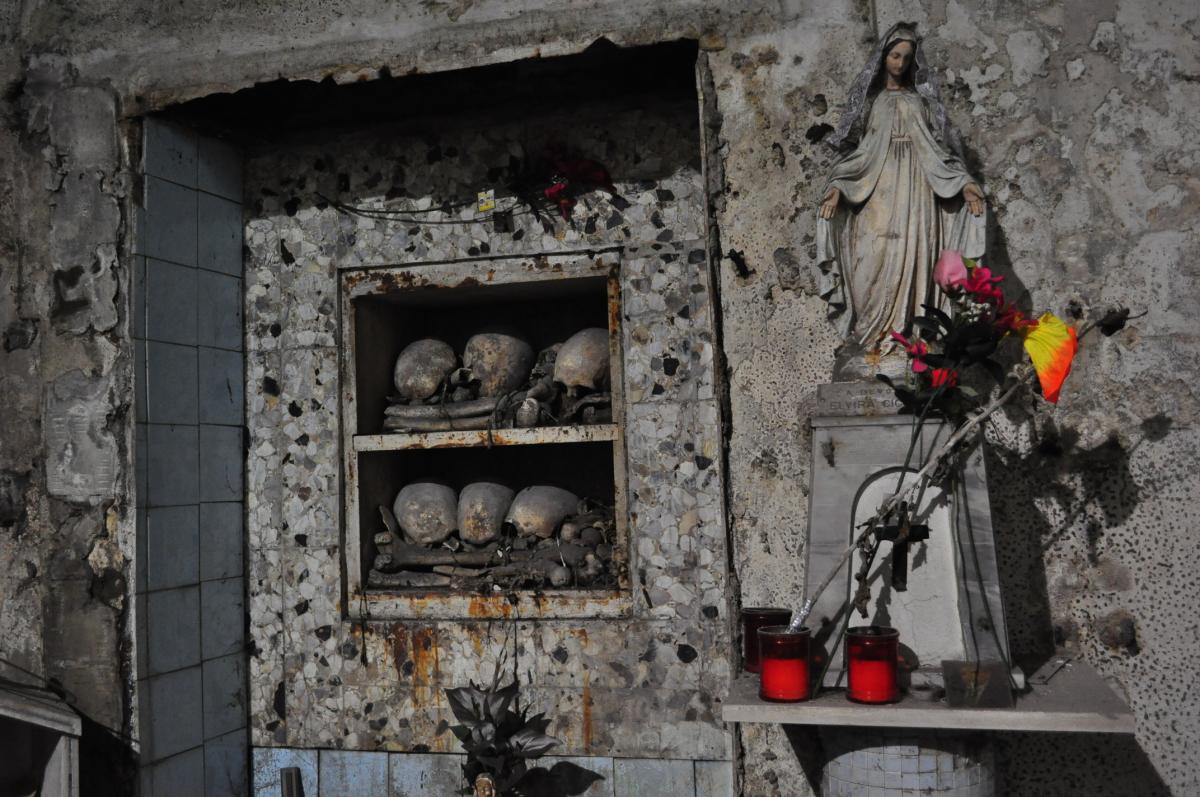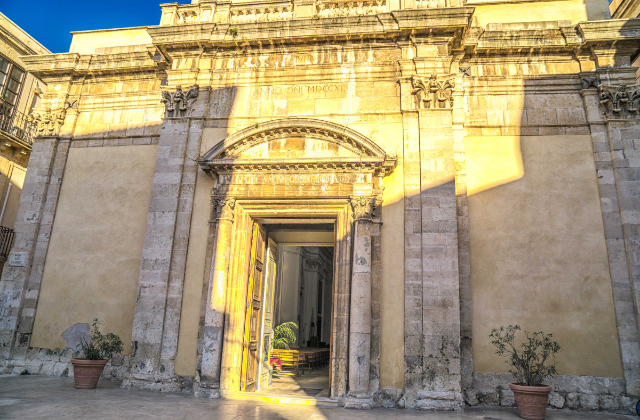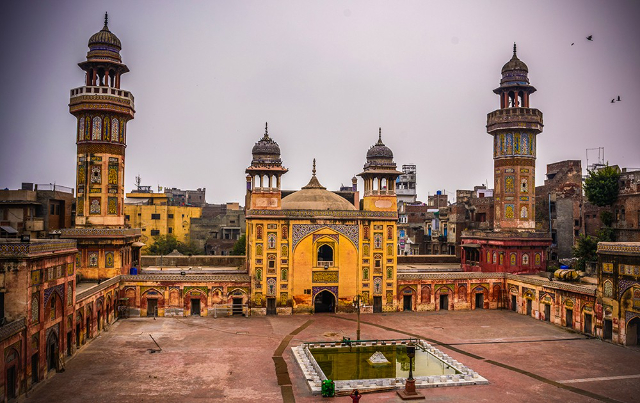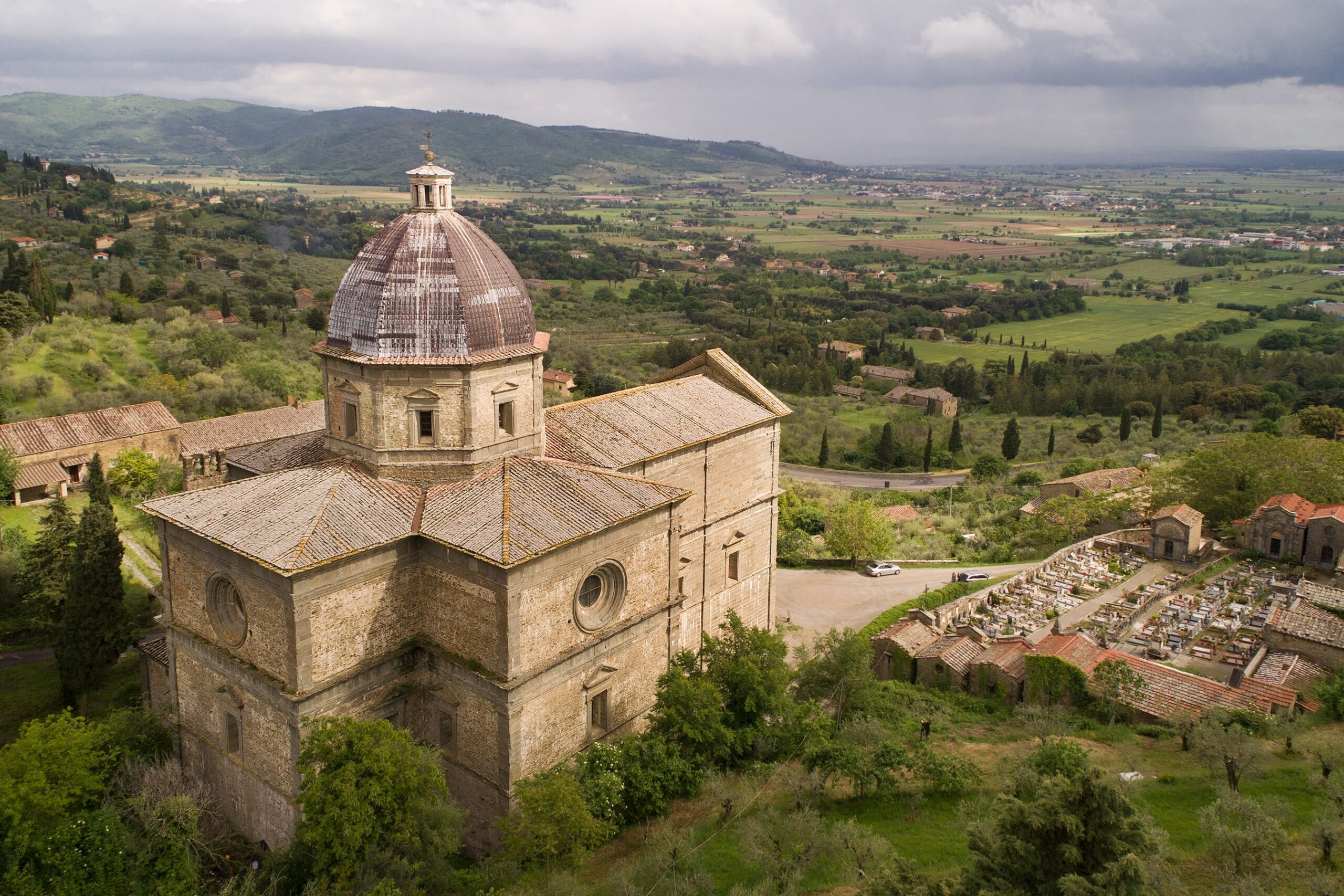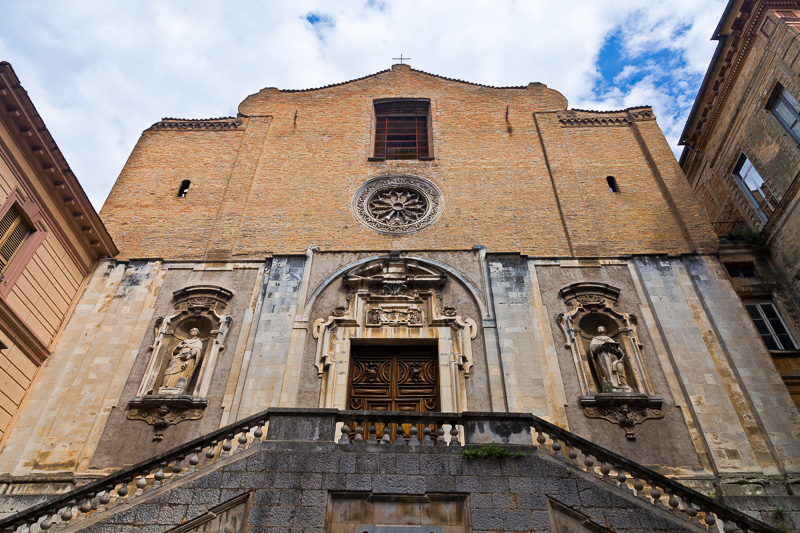The Upper Church
During the century of the plague, exactly in 1605, a group of nobles gave life to an Opera Pia, a lay congregation whose main purpose was the care of the souls in Purgatory. Thus arose, based on a design by Giovan Cola di Franco, the church conceived from the beginning on two levels: the upper church, a true masterpiece of Neapolitan Baroque art, and the lower church or hypogeum which is, to this day, the seat of the worship of the pezzentelle souls.
The upper church is small and lavishly decorated with polychrome marble and paintings.
The precious decoration of the chancel in marble commessi is the work of Dioniso Lazzari. On the high altar is Massimo Stanzione’s canvas depicting precisely the "Madonna with the Souls in Purgatory," and at the top is Giacomo Farelli’s "St. Anne Offers the Virgin Child to the Eternal Father." Stunning, however, is the decoration on the back wall behind the altar, which features a winged skull, a masterpiece by Lazzari, now not visible to those sitting in the nave because the altar built in the 18th century has covered it.
The Hypogeum
But below the main church there is another one in all specularity to the upper one. This is the Hypogeum which is in total opposition to its twin because it is bare, dark and devoid of decoration. It is designed to represent an evocative descent into Purgatory and thus a place of passage before divine glory. This is the place where the faithful formed a special relationship with the mortal remains, creating a cult bordering on the pagan and superstitious.
The cult
The cult of the pezzentelle souls (from petere, Latin for "to ask") was very strong. It consisted of adopting a skull-that is, taking a skull from one of the many dead buried here, cleaning it up, placing it in a little altar and praying for it so as to ease its passage from Purgatory to Salvation. It was up to the living to facilitate the ascent and ensure refreshment from the flames of the afterlife through prayers, masses and offerings.
When the soul was now saved, she would help those whose prayers had saved her by fulfilling their requests. These were small requests such as problems related to daily life, for the important things in fact there were the saints. In any case, a close and unbreakable relationship was created between the soul and those left to suffer on earth. The living person cared for the skull as a sacred talisman, built altars that were real little houses, made of cardboard or wood, adorned them with holy cards, rosaries, even jewelry or precious artifacts and everyday objects. Often these little houses were built with kitchen tiles precisely to make the deceased feel at home.
End of worship
This cult, unofficial and therefore never recognized, was endorsed by the church because it allowed for the collection of offerings and handouts, but in 1969 it was finally banned because it was considered pagan. Such a profound intermingling of life and death might have been conceivable in the 17th century when in fact it was normal, but not in modern times. Nevertheless, the closure of the hypogeum caused real panic scenes with people forcing entry and in fact worship continued. Only the 1980 earthquake stopped the practice making the hypogeum uninhabitable for a long time. Worship was also gradually lost and numerous thefts occurred because the tombs were filled with gold and jewelry.
The church and hypogeum were reopened only in 1992 by the Superintendence for Artistic and Historical Heritage of Naples, and to this day they can be visited and are open to the public. In addition to the church and Hypogeum, the small Opera Museum, which houses ecclesiastical objects from various periods, can also be visited.
